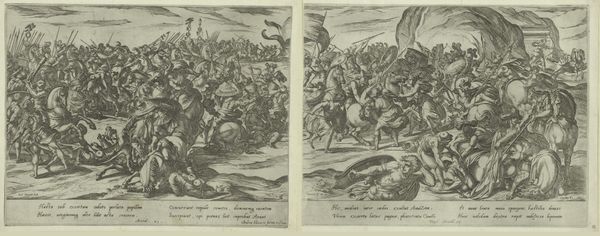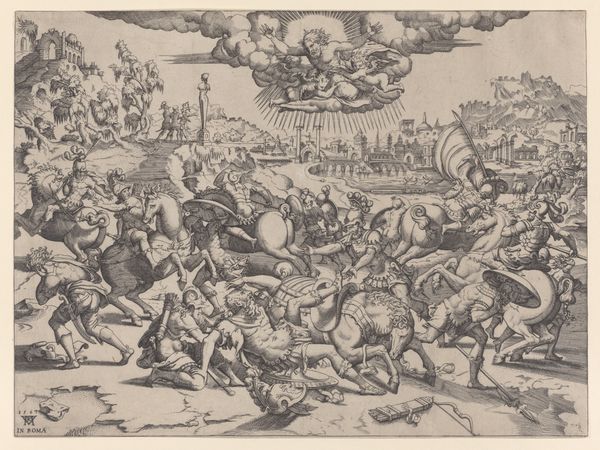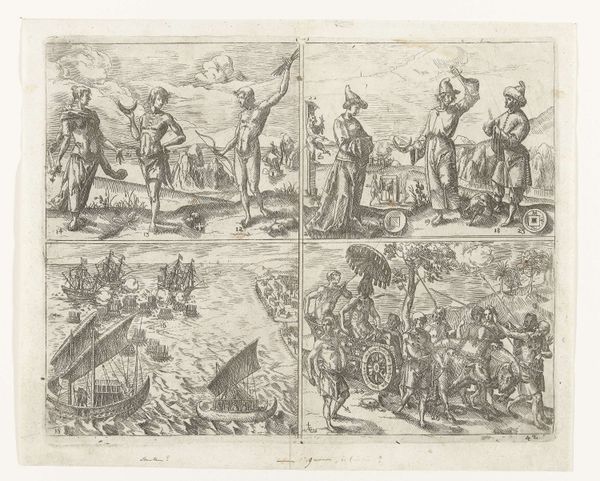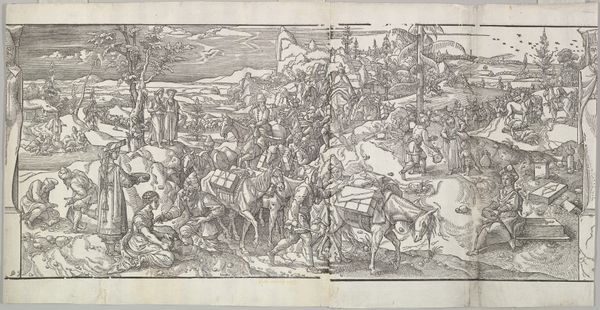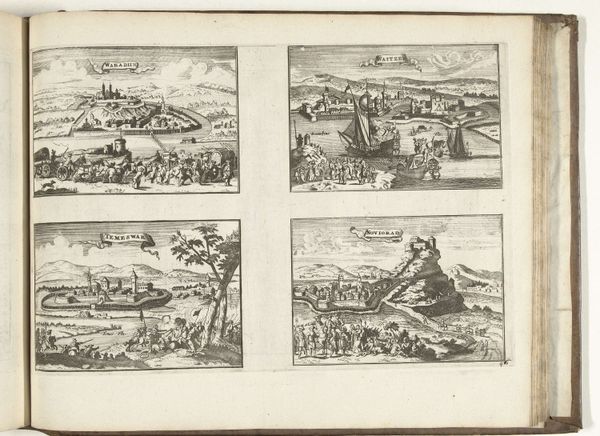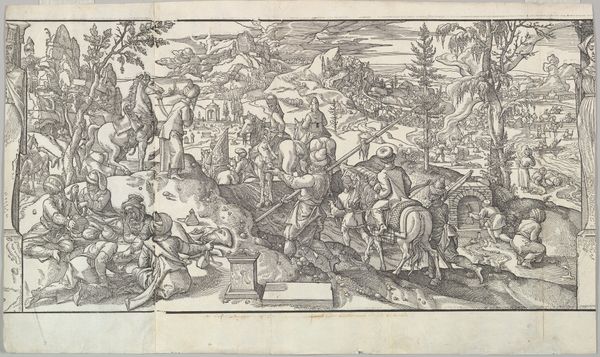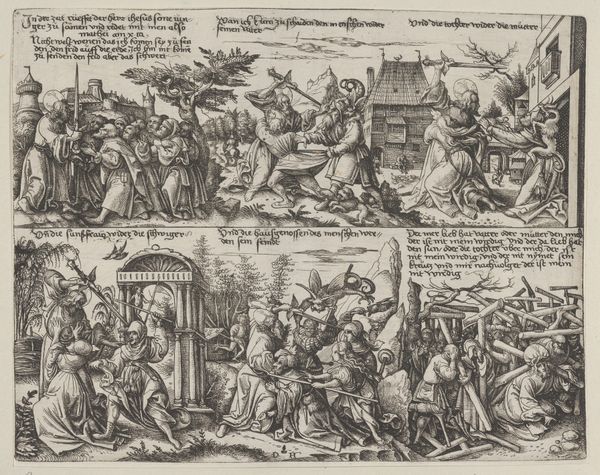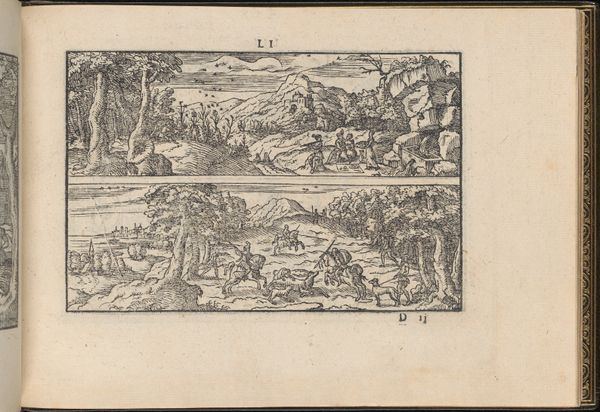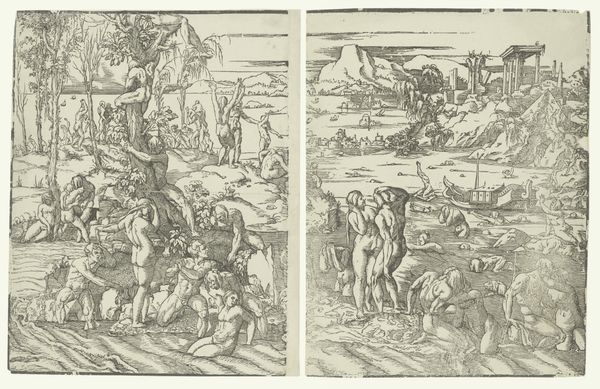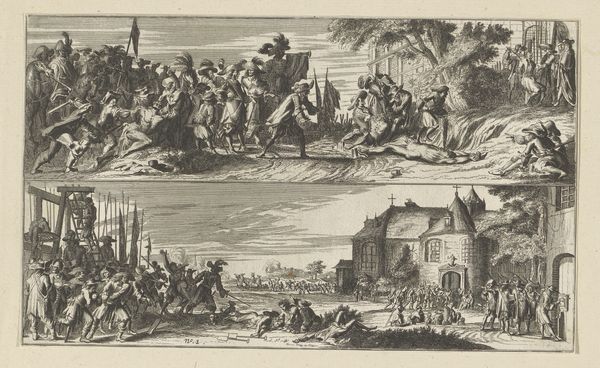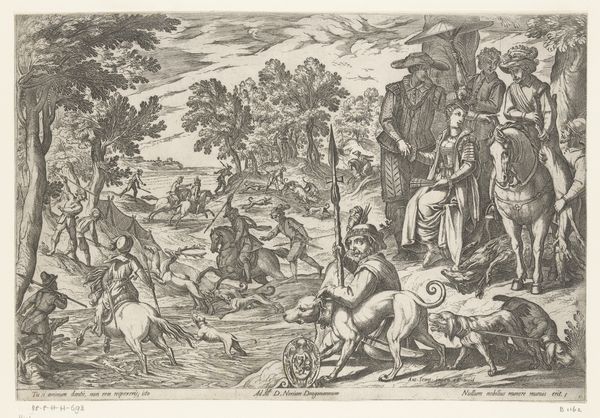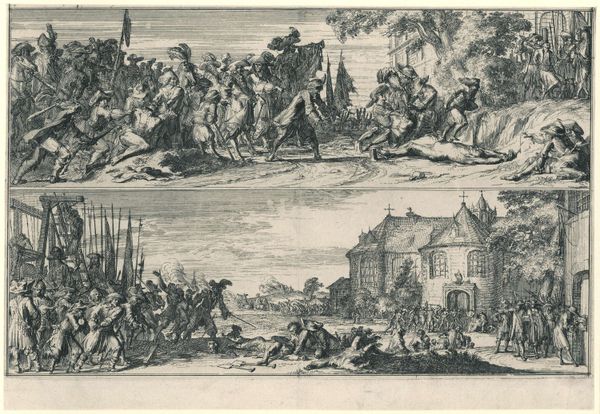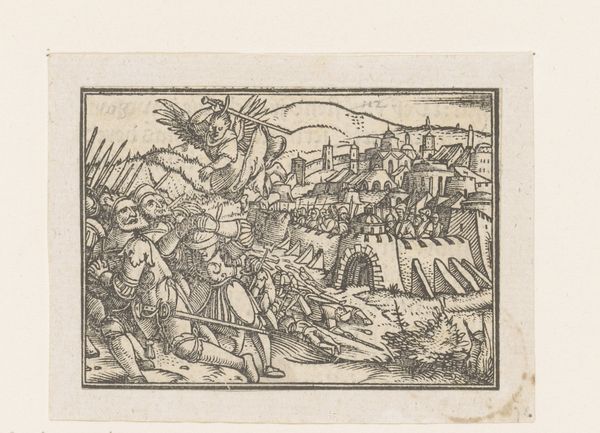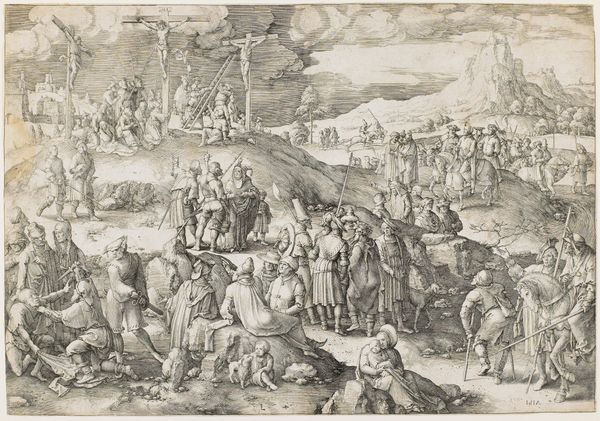
print, etching, engraving
#
pen drawing
# print
#
pen illustration
#
pen sketch
#
etching
#
landscape
#
figuration
#
line
#
pen work
#
history-painting
#
northern-renaissance
#
engraving
Dimensions: height 395 mm, width 344 mm, height 397 mm, width 275 mm
Copyright: Rijks Museum: Open Domain
Curator: Here we have Pieter van der Borcht the Elder's "Conversion of Paul," a print likely produced between 1545 and 1608, now residing in the Rijksmuseum's collection. Editor: Wow. My first thought is a battlefield…chaos rendered in elegant, tight lines. And that sky! There's something almost theatrical about it. Curator: The dramatic use of line is certainly crucial. Observe how van der Borcht employs hatching and cross-hatching to delineate form and texture, creating a sense of depth within a predominantly linear composition. We see a distinct perspectival rendering that amplifies the overall dynamism. Editor: It’s like he's caught this pivotal, almost explosive instant where everything shifts. You feel the jolt, not just see it. Is the Northern Renaissance aesthetic seeping through here, with a touch of drama added in? The way the figures are arranged...there's movement everywhere. Curator: Precisely. The artist orchestrates a visually complex scene divided in two parts, drawing our eyes to details and a distant city rendered with meticulous precision. And you are astute to acknowledge the hints to Northern Renaissance’s propensity for detail. It also shows its reliance to linearity and symbolism. Editor: Linearity I get. Symbolism, hmm, well that makes me think – with a subject like Paul's conversion, shouldn't there be an overriding sense of divine intervention instead of just…horseshoes kicking up dirt? I like that friction, it almost cheapens this alleged moment of truth in a really wonderful way. Curator: Indeed, your interpretation suggests the artist challenges preconceived notions of this event. One has to also consider, for example, that the print's visual rhetoric and carefully planned composition are alluding to period considerations about narrative and religious iconography. Editor: I guess what I love most is how this print isn’t just about religious experience, but something much more human, very turbulent. That, to me, transcends time. Curator: A worthwhile meditation to close upon; it encourages us to acknowledge this print as not merely an object of historical interest but as an occasion for contemplative exchange across eras.
Comments
No comments
Be the first to comment and join the conversation on the ultimate creative platform.
